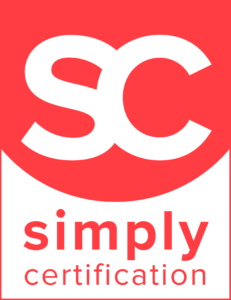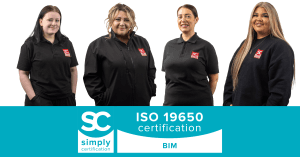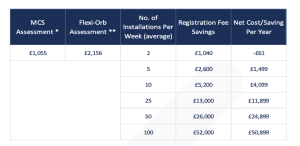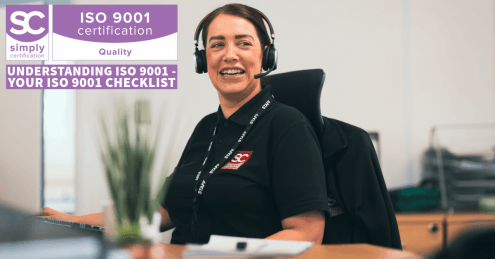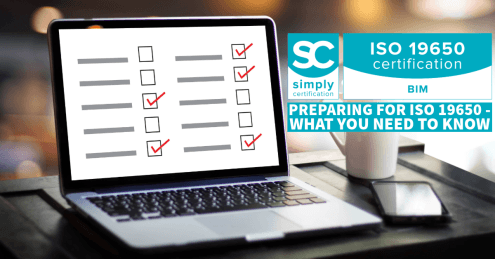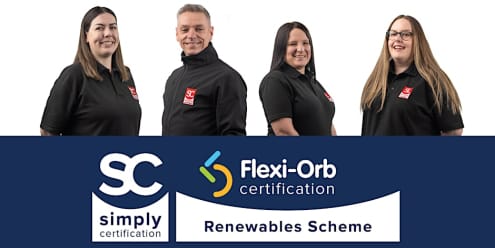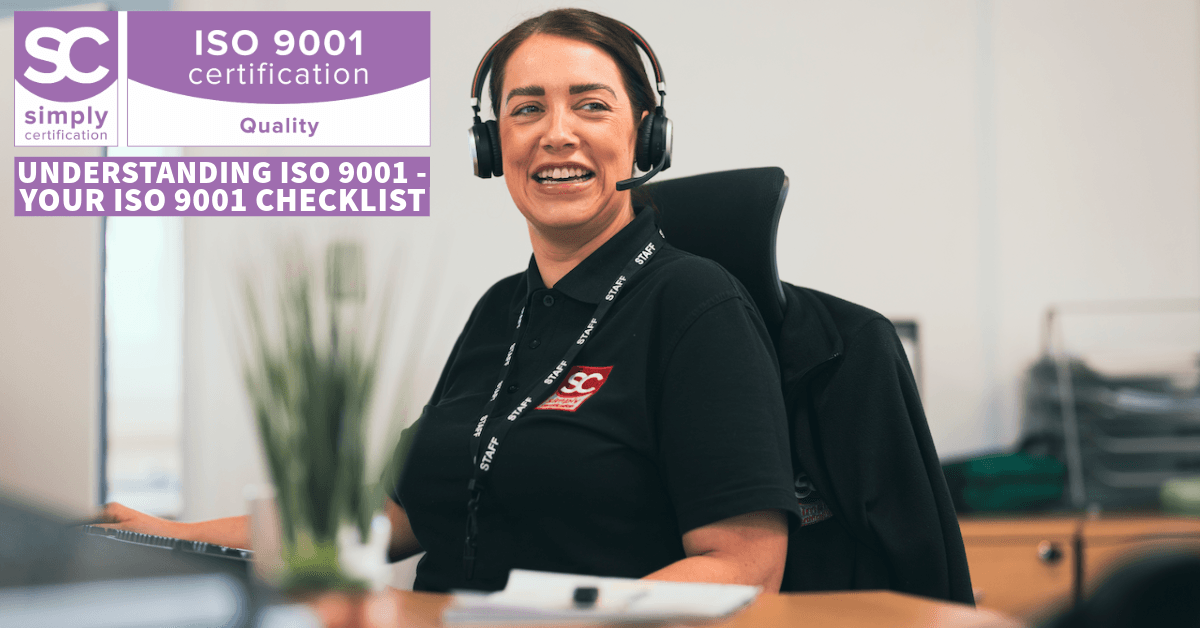
Welcome to our ISO 9001 guide. In this blog, you will find a handy ISO 9001 checklist which will help you to understand what documents you need to prepare before you apply for certification.
A quick word of caution
Before you start any ISO 9001 work, it’s important to fully read and understand the standard. Failure to fully appreciate the scope involved may lead to too many non-conformances when you get to the assessment stage- delaying your certification and ultimately costing time and money.
Our ISO 9001 checklist will help you to understand what documentation you need to prepare but it is not a substitute for reading the standard properly.
What is ISO 9001?
ISO 9001 is an internationally recognised standard for quality management systems (QMS), set up by the International Standards Organisation (ISO). It is a framework that companies use to ensure that their processes are continually improving, ensuring that customer and regulatory requirements are met and exceeded.
What is the benefit of ISO 9001?
Holding ISO 9001 certification signals to your customers and suppliers that your business is a credible organisation. ISO 9001 is not industry-specific and can be applied to organisations of any size, in any sector.
Read on for more information on how ISO 9001 is structured and for access to our ISO 9001 checklist.
How is ISO 9001 structured?
ISO 9001 focuses on quality management principles. It is based on several key principles, including:
#1 Customer Focus- Meeting and exceeding customer expectations
#2 Leadership- Establishing a clear vision and direction for the organisation.
#3 Engagement of People- Involving employees at all levels to improve processes.
#4 Process Approach- Managing activities and resources as interrelated processes.
#5 Improvement- Continuous improvement of processes and systems.
#6 Evidence-Based Decision Making- Using data and analysis to guide decisions.
#7 Relationship Management- Managing relationships with stakeholders, including suppliers and customers.
Preparing for ISO 9001 Assessment
Below are the steps you should take to prepare for certification. Achieving ISO 9001 certification involves a rigorous assessment process, and our checklist will help you prepare the correct documentation needed.
Step 1- Understand the Requirements
Begin by thoroughly understanding the ISO 9001:2015 standard. This may involve training key personnel, attending workshops, or consulting with experts.
We have said it before, we will say it again- read and understand the standard thoroughly. If you are struggling or need additional support, then it might be worth considering a consultancy to help prepare you for certification.
Step 2- Conduct a Gap Analysis
Conduct a gap analysis to compare your current practices against the requirements of ISO 9001. This will help identify areas that need improvement before the certification audit.
We can help you with a gap analysis, please contact our friendly and experienced team for more information.
Step 3- Develop or Update Your QMS
Based on the gap analysis, develop or update your QMS to align with ISO 9001 requirements. This may involve creating new procedures, improving existing processes, and ensuring proper documentation. Our checklist can help with this process.
Step 4- Engage and Train Employees
Ensure that all employees understand the importance of the QMS and their role in maintaining it. Provide training where necessary to build competence and awareness.
Step 5- Implement Document Control
Establish robust document control processes to ensure that all QMS-related documents are accurate, up-to-date, and accessible. This includes policies, procedures, work instructions, and records.
Step 6- Implement Internal Audits
Conduct internal audits to assess the effectiveness of your QMS and identify areas for improvement. Internal audits should be conducted regularly and by trained auditors who are independent of the areas being audited.
Step 7- Conduct a Management Review
Hold a management review meeting to evaluate the performance of the QMS, discuss audit results, and make decisions on necessary improvements.
Step 8- Select a Certification Body
Choose a reputable certification body accredited by UKAS (United Kingdom Accreditation Service). The certification body will conduct the external audit. For our guide to choosing a certification body, please click here.
In short, an accredited certification body has been formally recognised by a national or international accreditation body to conduct certification assessments according to specific standards- ensuring that your certification has been carried out to the highest standards and is fit for purpose.
Requirements for ISO 9001 Certification
To achieve ISO 9001 certification, companies must meet the requirements outlined in the ISO 9001:2015 standard.
Requirements are organised into 10 clauses, with the main requirements starting from Clause 4:
Clause 4 requires you to:
- Map the internal and external factors that affect your company
- Demonstrate the needs of interested parties (e.g. customers, suppliers, employees).
- Define the scope of the QMS.
Clause 5 relates to leadership and asks you to demonstrate:
- That top management shows a commitment to the QMS.
- That you have established a quality policy and set quality objectives.
- That you have defined roles & responsibilities so that the QMS is effective.
Clause 6 is concerned with planning, ensuring that you:
- Identify risks and opportunities that could impact the QMS and plan actions to address them.
- Establish quality objectives and develop plans to achieve them.
- Plan for changes to the QMS, considering potential impacts and resources.
Clause 7 is related to support, ensuring that you can:
- Determine (and provide) the necessary resources for the QMS, including personnel, infrastructure, and a suitable work environment.
- Support employees to be competent and aware of their roles in the QMS.
- Establish processes for communication, both internally and externally.
- Control documented information to ensure it is accurate, accessible, and protected.
Clause 8 is operation, which asks you to:
- Plan, implement, and control processes needed to meet customer requirements and enhance satisfaction.
- Manage external providers (e.g. suppliers) to ensure they meet quality requirements.
- Control production and service processes to ensure consistent quality.
- Establish processes for handling non-conformances and take corrective action.
Clause 9 is performance evaluation which asks you to:
- Monitor, measure, analyse, and evaluate the performance of the QMS.
- Conduct internal audits to assess the effectiveness of the QMS.
- Hold management reviews to assess the QMS.
Finally, Clause 10 is concerned with continuous improvement, asking you to:
- Identify and implement opportunities for continuous improvement.
- Embed a process to manage non-conformances through corrective actions.
- Continually enhance the QMS to improve performance and meet evolving customer needs.
Your ISO 9001 Checklist
To help you do this, we have created a free ISO 9001 checklist. This checklist covers the documentation you need to prepare for ISO 9001 including:
Planning documents
- Including SWOT, process flow charts and company structure charts.
Process documents
- Including roles & responsibilities, equipment checks, recruitment, training & induction.
- Operational process flow charts, examples of tenders, testing of specification, warranty provisions and contractual obligations within service level agreements.
Checking documents
- Including records of improvements of specific systems, internal audits, results of monitoring & measurement and key performance records.
- Management review procedure & records of minutes of conducted meetings, corrective actions and improvements of specific systems.
A Quick Reminder- the Stages of Certification
Step 1- Gap Analysis (Optional)
Some companies opt for a pre-assessment audit, which is a trial run of the certification audit. This can help identify any remaining gaps and prepare you for the official assessment.
Step 2- Certification Audit
The certification audit is typically conducted in two stages:
Stage 1 Audit:
The auditor reviews your documented QMS to ensure it meets the ISO 9001 requirements. This stage also assesses your readiness for the Stage 2 audit.
Stage 2 Audit:
The auditor conducts an on-site assessment to verify that your QMS is effectively implemented and that all ISO 9001 requirements are being met.
Step 3- Address Nonconformities
If the auditor identifies any nonconformities during the audit, you will need to address them within a specified timeframe. This may involve implementing corrective actions and providing evidence of their effectiveness.
Step 4- Achieving Certification
Once all nonconformities have been resolved, and the auditor is satisfied with your QMS, you will receive ISO 9001 certification. The certification is valid for three years, with surveillance audits conducted annually to ensure ongoing compliance.
Step 5- Maintaining Certification
Certification is not a one-time achievement; it requires an ongoing commitment to maintaining and improving the QMS. Here are some key steps to ensure continued compliance:
Regular Internal Audits
Continue conducting regular internal audits to monitor the effectiveness of your QMS and identify areas for improvement.
Ongoing Training
Provide ongoing training to employees to ensure they remain competent and aware of their roles in the QMS.
Continuous Improvement
Implement a culture of continuous improvement, regularly reviewing processes and making enhancements to improve quality and efficiency.
Management Reviews
Hold regular management review meetings to assess the performance of the QMS and make decisions on future actions.
ISO 9001 certification is a powerful tool for companies seeking to demonstrate their commitment to quality and continuous improvement. While the certification process requires careful planning and preparation, the benefits make it a worthwhile investment.
If you are ready to discuss certification then please contact our friendly and experienced team.
